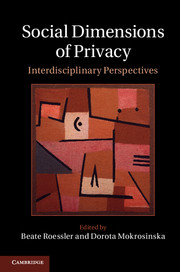Part II - Privacy: practical controversies
Published online by Cambridge University Press: 05 July 2015
Summary

- Type
- Chapter
- Information
- Social Dimensions of PrivacyInterdisciplinary Perspectives, pp. 83 - 222Publisher: Cambridge University PressPrint publication year: 2015



